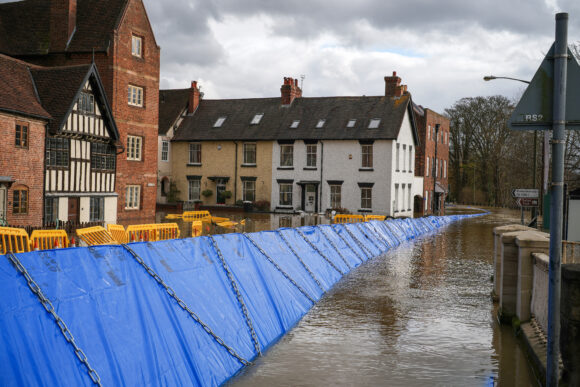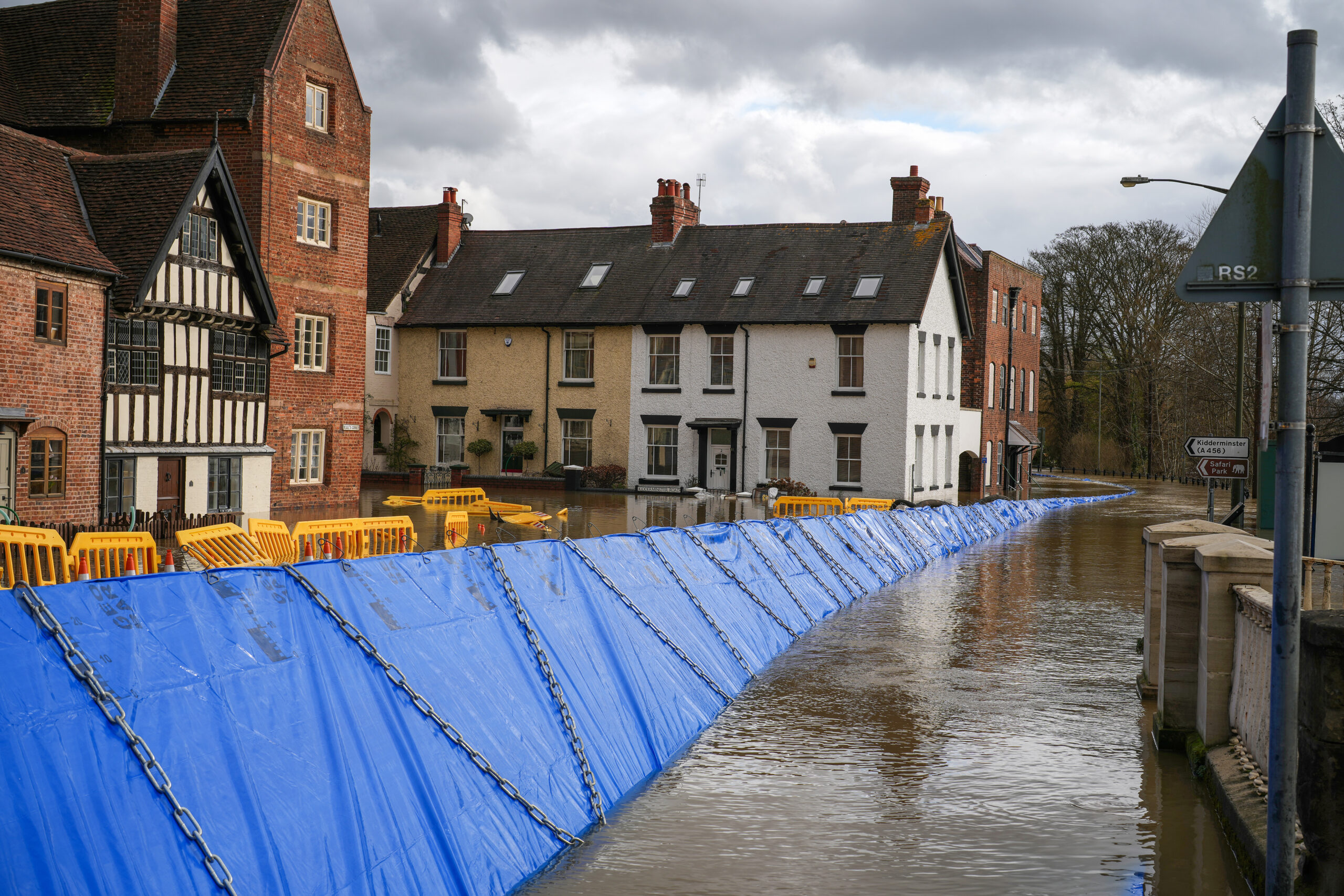
The UK is making it easier for flood defense projects to access public funds as climate change increases the risk to homes.
On Tuesday, the government announced changes to the way that funds are allocated to protect homes from river, surface water and coastal flooding. The adjustment will mean some projects no longer have to seek extra money from outside sources in order to qualify for government funding.
The modifications will reform a process that had become too complicated to be effective, Emma Hardy, Britain’s minister for flooding, said in a statement.
Read More: UK Warned Cuts to Flood Defense Are Too Dangerous to Consider
The UK is increasingly vulnerable to the effects of flooding as climate change brings more weather extremes. Roughly 6.3 million homes in England are at risk of flooding, a figure which may reach eight million by 2050. Many flood defenses, including barriers and embankments, are in poor condition, leaving homes and businesses exposed.
Of the 38,000 most-important flood defense assets in England and Wales, just 92% are seen as being in the “necessary condition,” according to government data.
Under the current funding model, projects to repair and refurbish flood defenses often need to attract external contributions, including from private companies, in order to secure enough government funds to go ahead. This has limited the scope to improve defenses, in some cases, and disadvantaged less populated areas.
The government has also lifted restrictions on newer homes, which previously stopped them from being taken into account when fund-allocation decisions are made. That old rule was meant to discourage building on flood-prone land, but climate change now means they may face higher risk than was known about when they were first built.
The poorest communities, which struggle to recover as quickly from flooding, also will receive at least 20% of the funds, the government said. The changes will apply beginning in April.
A separate analysis published on Tuesday by the insurer Aviva warned that climate change is pushing up flood and subsidence risk for thousands of properties. The most at-risk areas in central London and England’s east coast are projected to have 90% of homes threatened by river and coastal flooding by 2050.
Flood Re, a national initiative which allows owners to access affordable insurance even if their property is at risk of flooding, is due to end in 2039. That will lead to “uninsurable properties and unaffordable flood insurance” unless better flood defenses are introduced, Aviva said.
On Monday, a committee of UK policymakers published a report showing that funding for flood defenses was too low to keep pace with the effects of climate change.
“This isn’t merely a problem for those in our society with higher-value homes,” said Toby Perkins, a Labour MP and chair of the Environment Audit Committee. “Those at the other end of the scale have just as much to lose and fewer assets to fall back on.”
Photograph: Water from the overflowed River Severn floods the streets in Bewdley, Worcestershire, in 2022. Photo credit: Christopher Furlong/Getty Images Europe
Related:
Copyright 2025 Bloomberg.
Topics
Mergers & Acquisitions
Flood
Interested in Flood?
Get automatic alerts for this topic.




